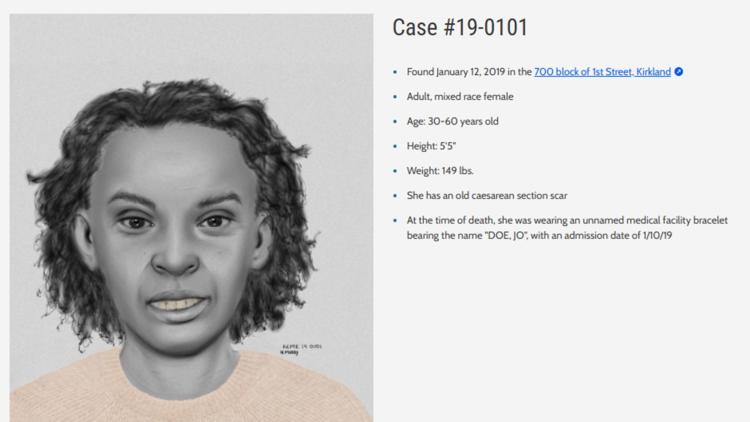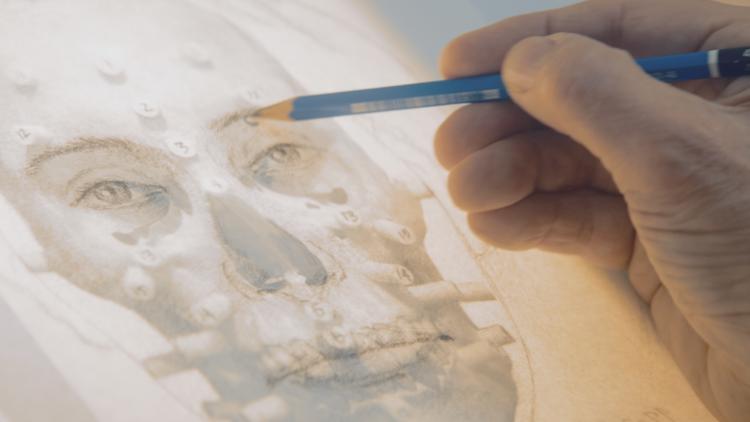KING COUNTY, Wash. — Forensic anthropologists, medical examiners, and sketch artists at the King County Medical Examiner’s Office are working tirelessly to solve one of the most pressing questions in their field: Who are they?
The office currently holds approximately 56 unidentified remains from individuals who died in King County or whose bodies were discovered in the area. While many of these individuals led lives that were once intertwined with society, their deaths have left them virtually invisible.
Dr. Matthew Lacy, the county’s medical examiner, explained that identifying the deceased is the office’s top priority.
"The goal is to have zero unidentified cases," Lacy said. "But it can take decades in some cases."
In 2023 alone, over 2,500 deaths were investigated at the office, with most individuals identified. However, a smaller group of cases presents significant challenges, especially when remains are skeletal or decomposed. Forensic staff are hopeful that DNA testing and detailed forensic reconstructions will help bring answers to families who are still searching for their missing loved ones.
DNA efforts and skeletal remains
In the office’s autopsy suite, remains are carefully stored, awaiting further examination or release to their families. There, Lacy and his team will try to answer three main questions: Who are you? How did you die? What are the circumstances of your death?
While sometimes it may take decades to answer all three, they will get it done.
"In some cases, we’ve retained bone samples from skeletal remains and are working to generate DNA profiles," Lacy said. "We may not have the full body, but we know where those samples are and we’re working to give them a name."
Of the 56 unidentified cases, DNA profiles exist for all but three. One notable case, known as "Kirkland Jane Doe," has a full DNA profile, but her identity remains a mystery. Found in January 2019 in an alley in Kirkland, she was between 20 and 40 years old, likely homeless, and wearing clothing that appeared to be from a hospital, including a Jane Doe bracelet. Despite extensive investigations, no hospital has a record of the bracelet.
"Her cause of death was hypothermia," said Lacy. "That’s all we know so far."
The public’s response to the case has been helpful, according to Lacy. Since the sketch of the woman was released, the office has received numerous calls, but none have provided the key to her identity yet.
"Someday, someone is going to come forward with the right piece of information and we are going to be able to put her name to her face," Lacy said.
Here's a collection of some of King County's open cases, including Kirkland Jane Doe:
Current unidentified remains in King County
Inside the King County Medical Examiner's Office autopsy suite
Lacy took the Unsolved Northwest team on a tour of the autopsy suite, which is not open to the public.
Unidentified remains are stored and examined there. While they cannot store all remains indefinitely due to storage limitations, they will take samples of bone, which can be used to generate a DNA profile.
Watch the full walk-through below:
Sketch artist brings faces to life: 'It means families can get closure, even if it’s sad news'
Another vital part of the identification process is forensic artist Stephen Missal, who has worked with the King County Medical Examiner’s Office to create sketches of the unidentified deceased. Missile has drawn more than 250 reconstructions, with about 50 of those cases leading to successful identifications.
"I’m the person of last resort," Missal said. "When there’s little information left, I’m the one who tries to bring a face back to life."
His work starts with cranial remains and involves painstakingly reconstructing features to give the deceased a more recognizable face. He uses a combination of scientific techniques and artistic skill to create drawings that can eventually lead to an identification.
"Getting an ID, knowing that I’ve helped give someone a name, brings a deep sense of satisfaction," Missal said. "It means families can get closure, even if it’s sad news."
Forensic sketch artist shows process of bringing skeletal remains to life
The human side of forensic investigation
For Lacy and his team, the work is not just about solving cases. It’s about ensuring that no one is forgotten.
"It’s a fundamental humanity to be able to name somebody," Lacy said. "It’s our responsibility to give them their name back, to answer the questions about their lives and deaths."
Reflecting on his work, Lacy quoted a line from fictional detective Harry Bosch: "Everybody counts." He said, "It sounds cheesy, but it’s really true. Every case is different, and it never gets old. There’s always satisfaction in giving answers to the families who are waiting."
As the search continues for the identities of King County’s unknown deceased, the team remains committed to solving each case, no matter how long it takes. For Lacy, Missal and other staff, the work is more than just a job; it’s a mission to ensure that no one is left without a name.





















